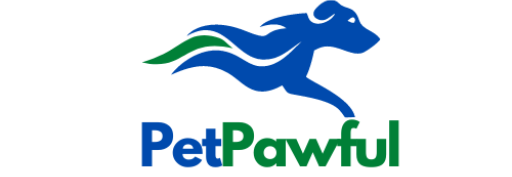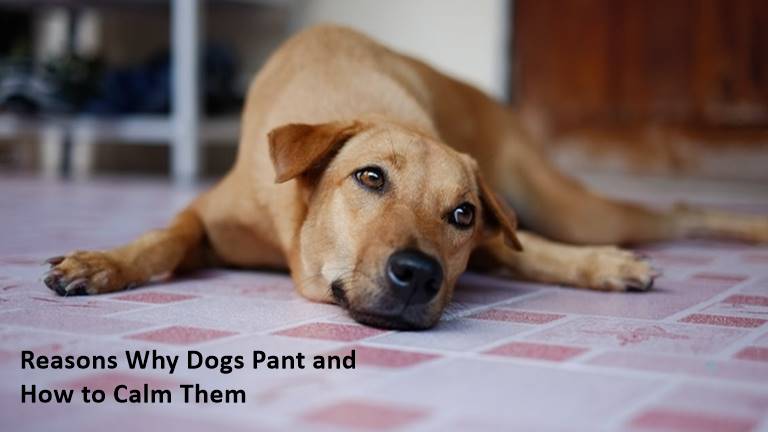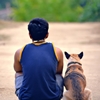Dogs are amazing creatures that are often considered man’s best friend. They are loyal, friendly, and loving. However, they also have unique behaviors that can sometimes be confusing to their owners. One such behavior is panting, which is often seen in dogs. As a dog owner, it’s important to understand why dogs pant and how to calm them down when they are panting excessively.
What Is Panting in Dogs?
Panting in dogs is a natural behavior that helps regulate their body temperature, especially in hot weather or after exercise. It is a cooling mechanism where moisture evaporates from their tongue and respiratory tract, dissipating heat.
However, excessive panting can indicate stress, anxiety, pain, respiratory problems, or underlying medical conditions. It’s important to monitor your dog’s panting patterns, provide a calm environment, and consult with a veterinarian if there are any concerns or accompanying symptoms to ensure your furry friend’s well-being.
It is equally important to understand the distinction between panting and labored breathing. As discussed above Panting in dogs is a natural response characterized by rapid and shallow breaths, primarily used for regulating body temperature.
On the other hand, labored breathing involves strained respiration and may be accompanied by distress signals like crying, whining, or whistling sounds originating from the nostrils or windpipe, often caused by blockages or obstructions.
Reasons Why Dogs Pant
When dogs pant, it’s often because they’re feeling hot and trying to cool off. However, there are other reasons why your dog might pant, so it’s important to consider the overall situation and observe their body language. Here are some common reasons why dogs pant.
Heat and Physical Exertion
Dogs pant more when they are exposed to high temperatures or engaged in physical activities. Panting helps them cool off by evaporating moisture from their tongue and respiratory tract. If your dog has been running, playing, or exercising, panting is a natural way for them to catch their breath and return their breathing to a normal rate.
Stress and Anxiety
Just like humans, dogs can experience stress and anxiety. When faced with unfamiliar environments, loud noises, separation, or other stressful situations, dogs may pant as a response to their heightened emotional state. It’s important to pay attention to other accompanying signs of stress, such as trembling, pacing, or avoidance behaviors, and provide a calm and secure environment for your dog.
Pain or Discomfort
Dogs may pant as a result of pain or discomfort. It could be due to an injury, illness, or underlying medical condition. If you notice your dog panting excessively, especially if it is accompanied by changes in behavior, lack of appetite, or signs of discomfort, it is essential to consult with a veterinarian to identify and address the underlying cause.
Respiratory Issues
Certain respiratory problems can contribute to excessive panting in dogs. Brachycephalic breeds with flat faces, such as Bulldogs or Pugs, are more prone to respiratory issues that can lead to panting. These breeds may have narrowed airways, making it harder for them to breathe, resulting in increased panting.
If you have a brachycephalic breed or if your dog exhibits difficulty breathing along with panting, it is recommended to seek veterinary advice.
Medical Conditions
Panting can also be a symptom of various medical conditions in dogs. These conditions may include heart problems, infections, hormonal imbalances, or fever. If you’ve noticed them panting heavily without any apparent reason, it could be a sign of an underlying problem. It’s important to pay attention to their panting behavior and seek veterinary attention if you observe any of the following issues:
Heatstroke
During the hot summer months, heatstroke can affect dogs, especially if they are left in hot cars. If your dog has heatstroke, they may pant heavily and struggle to breathe normally. It’s crucial to move them to a cooler place immediately and look out for other symptoms like excessive thirst, high body temperature, glazed eyes, a fast heartbeat, and dark or bright red tongue and gums.
To prevent heatstroke, avoid taking your dog out during peak temperatures, never leave them in a hot car, and always provide water for them to drink.
Respiratory Problems
Excessive panting can also be a result of respiratory issues such as pneumonia, which is characterized by inflammation of the lungs or lower respiratory tract due to infection. Look out for additional symptoms like fever, difficulty breathing, lethargy, and coughing.
Allergic Reaction
Introducing a new medication can sometimes trigger an allergic reaction in dogs. If your dog is experiencing an allergic response, they may pant excessively, struggle to breathe, and show signs of lethargy or vomiting.
Heart Problems
Dogs with heart issues may pant consistently, even when they are not exercising, as they struggle to catch their breath. Keep an eye out for accompanying symptoms like coughing, weakness, and tiredness.
Pain
Dogs are experts at hiding their pain, and panting can be a sign of discomfort. If your dog’s panting occurs at odd times, such as during the night when they should be resting, it could be indicative of pain. Monitor their behavior closely and consult with your vet for a proper diagnosis.
Cushing’s Disease
Cushing’s disease occurs when the adrenal glands release an excess amount of cortisol. Alongside excessive panting, other symptoms may include increased thirst, weight gain, thinning skin and hair, and a pot belly.
How to Calm a Panting Dog?
Seeing your dog panting can be concerning, but there are several steps you can take to help calm them down:
1. Find a Cool Environment
If your dog is panting due to heat or exertion, move them to a cooler area with good airflow. Provide access to shade and ensure they have plenty of fresh water to drink.
2. Keep Calm and Comforting
Dogs are sensitive to their owners‘ emotions, so staying calm and reassuring can help them relax. Speak to your dog in a soothing tone and offer gentle petting if they are comfortable with it.
3. Apply a Cool Compress
You can help lower your dog’s body temperature by applying a cool, damp towel or cloth to their neck, paws, and belly. Avoid using ice-cold water or ice packs, as they can cause a sudden drop in temperature.
4. Offer Water
Hydration is crucial for a panting dog. Make sure clean water is readily available for them to drink. You can also offer them ice cubes or frozen treats made from low-sodium broth or diluted fruit juice.
5. Provide a Quiet Space
If your dog is panting due to stress or anxiety, create a calm and quiet space where they can retreat. Set up a comfortable bed or crate and provide familiar toys or blankets to help them feel secure.
6. Use Calming Techniques
Some dogs respond well to calming techniques such as gentle massage or aromatherapy. Lavender or chamomile scents, specifically designed for dogs, can help create a relaxing atmosphere.
7. Distraction and Mental Stimulation
Engage your dog in activities that redirect their focus and provide mental stimulation. Puzzle toys, interactive games, or training exercises can help shift their attention away from whatever may be causing stress or anxiety.
8. Consult with a Veterinarian
If your dog’s panting persists, is accompanied by other concerning symptoms, or you’re unsure of the underlying cause, it’s always best to consult with a veterinarian. They can evaluate your dog’s overall health and provide appropriate advice or treatment if needed.
Final Thought
By understanding why dogs pant and how to calm them, you can be a knowledgeable and caring dog owner, promoting your dog’s comfort and happiness in various situations. Your attentiveness and proactive approach will strengthen the bond between you and your canine companion, ensuring a healthy and harmonious relationship.


